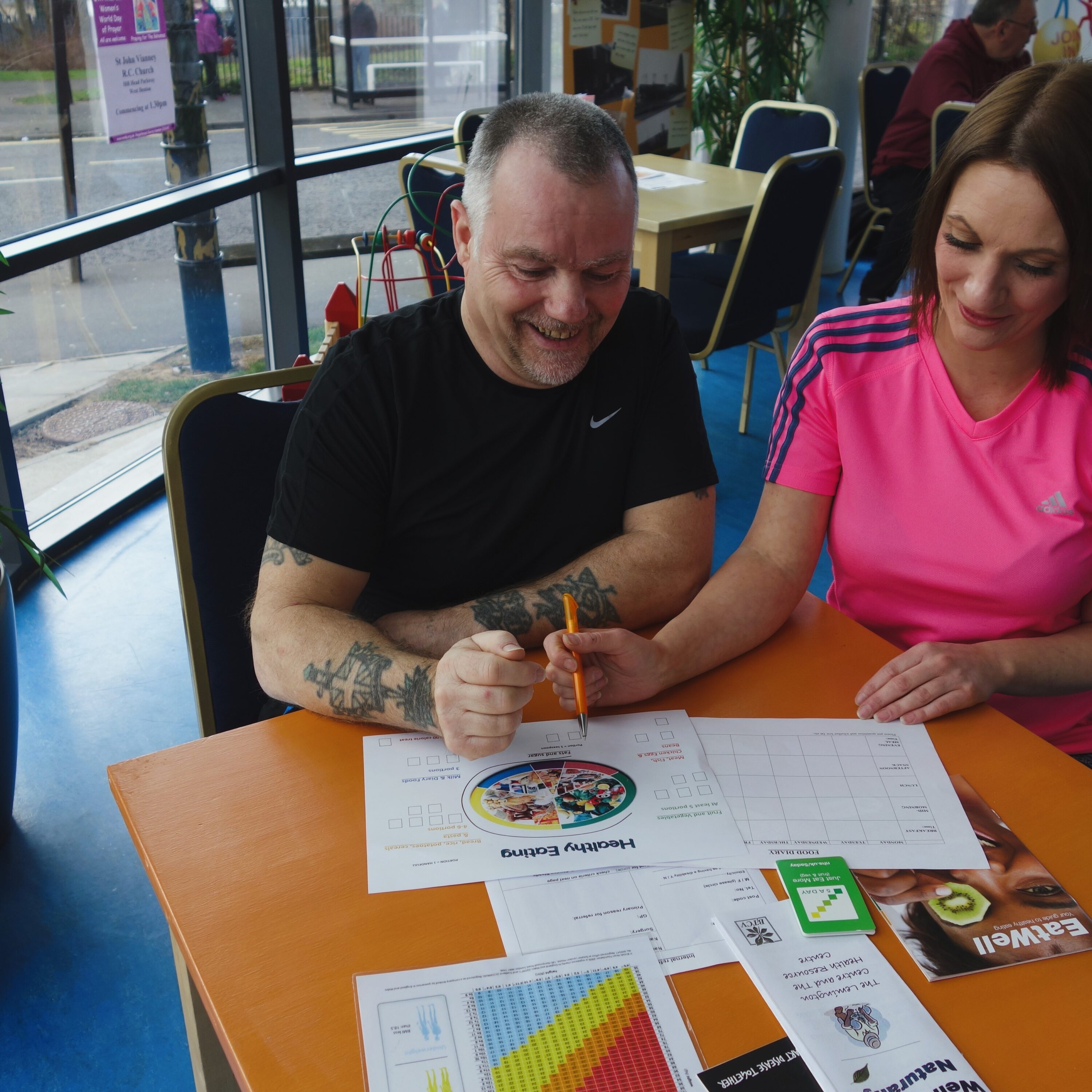21.11.2021 | Case Study
In practice: Asset-based community health in Newcastle and Northamptonshire

Secure data sharing reveals large savings to hospital costs
In the past, when Theresa went to her GP to discuss concerns about her life, she would probably have been prescribed some medication. In a short appointment, doctors would have struggled to find time to understand the relative impacts of a recent divorce and emphysema on Theresa’s life and health.
However, Theresa’s local GP practice had an automated referral process in place that flagged her as someone with one or more long-term health conditions who was at risk of isolation and depression, and could benefit from support in multiple aspects of her life. A remarkably seamless click of a button by her GP was enough to refer Theresa to Ways to Wellness. This is a unique social prescribing programme on a scale unprecedented in Britain, supporting thousands of adults in the west end of Newcastle.
Here again, Theresa’ experience was not what she expected. Instead of the form-filling that might have occurred in the past, Theresa’s link worker was able to move straight to getting to know her.
“I’d gone through a divorce and my long-term condition had deteriorated,” explains Theresa. “The first thing my link worker did was to build up my confidence and get me to talk about myself. I talked a lot about the things I like to do, and we thought about me going back to creative writing, which I enjoy.”
The real value of the Ways to Wellness service lies in this relationship between link workers and individuals. Professor Chris Drinkwater, a retired local GP and chair of Ways to Wellness, says that this one-to-one link worker approach created a space for holistic conversations with patients, whilst simultaneously ensuring that broader impact understanding could be achieved.
“The link workers are there to establish a relationship with individuals and to be their beacon of support. They are trained to listen and understand the many domains of a person’s life that can have such an impact on their health and well-being – such as job, family, finances and physical activity. We needed to make sure that their time was fully focused on this, but also make it possible to really understand the long-term impact of the service on healthcare behaviour.”
Removing the administrative burden to focus on relationships
The investment in sophisticated, secure data-matching enabled GPs to refer patients to the service seamlessly. Once referred, their link worker began the relationship. People who had previously been coming to GP practices 3-4 times per week to seek medical solutions for illnesses exacerbated by social determinants were now being treated more effectively, in the community. Link workers themselves were able to build their own picture of each patient, focusing on both medical and non-medical categories: lifestyle; looking after yourself; managing symptoms; work, volunteering and other activities; money; where you live; family and friends; feeling positive. The link worker teams were given freedom to understand each person at their own pace, and focus on the information which was important to each person’s situation.
All wider ‘administrative data’ which such teams are normally required to collect was captured automatically through the automated referral form and the data-matching software.
Understanding the longer-term impact
Professor Drinkwater explains the process: “The link worker is a motivational interviewer, helping the person to think through what and how they want to change. The link worker will help someone, for example, to eat better, to re-establish relationships in their support circle, and to be involved in health-enhancing activities, such as a walking group.”
“All wider ‘administrative data’ was captured automatically through the automated referral form and data-matching software”
Having worked out an action plan together, the person and the link worker can measure progress using the scale of a systematised well-being tool, which encourages continuous learning and improvement. This data can be seen by the GP, who can review a person’s situation at a glance, both in terms of the social determinants of their health and their medical indicators. And the delivery is then able to track what happens next. It tracks validated progress milestones (cf. chapter 9) and undertakes a deep exploration of patients’ experiences (cf. chapter 10). However, it also measured appointments taken by GPs across the region, and securely compared data on hospital spend by condition over the next 7 years with the local NHS Clinical Commissioning Group – to build a broad, rich picture of the longer-term impact.
Dramatically improved outcomes
So far, over 6,500 patients have engaged with the service. Ways to Wellness cohort costs per head were 27 per cent lower than comparable areas, and 14 per cent of GPs’ time had been released to treat other people. “These outcomes represent a dramatic shift for the west end of Newcastle-upon-Tyne, which includes some of the most deprived areas in England,” says Professor Drinkwater. “It shows the importance of exploring with people many dimensions of their lives. By measuring the progress they make – and sharing the learning at all levels – we can support people more effectively as they try to make further advances in managing their lives.”
Or as a Ways to Wellness client puts it: “I do believe that knowing the Ways to Wellness team is like winning a lottery ticket in life.”
It is also possible to use these data science techniques to understand impact outside of the health system. For example, projects have been able share anonymised data with HMRC (cf. chapter 3) to understand people’s earnings evolution during the years after interacting with a specific service – which not only eliminates burdensome data collection but crucially provides better data than simply checking whether someone found a job or not. Projects can see whether they helped people into good-quality jobs, and armed them with the tools to progress further once they were back on the employment ladder. Conversely, if people face difficulties, sensitive data sharing with other government agencies (like the Jobcentre, or probation services) can prevent temporary difficulties from irrevocably undoing the progress made to date (cf. chapter 8).
Both the Office for National Statistics and the UK Data Service have invested heavily into ‘secure environments’ where sensitive data can be housed. Accredited researchers are able to access and link data from a huge array of sources across government. The ‘5 safes’ approach ensures that individuals remain completely protected from possible identification, and all data privacy legislation is fully respected; while for the first time giving researchers the ability to bring together a complete picture of what is happening to a cohort of people over time.
These sophisticated approaches are now being expanded into an even more ambitious collaboration across public services: Spring, a service in Northamptonshire that builds on the successes of Ways to Wellness and Thrive North East Lincolnshire (cf. chapter 7). For the first time anywhere in the country, the local councils, public health services, NHS bodies and central government have come together to jointly commission a service to help people across the region to manage their health and wellbeing, before their conditions worsen. Instead of the tragic (and expensive) amputations required for late-stage diabetes, Northamptonshire is successfully helping people to mitigate and even reverse the condition in its early stages. Instead of seeing people slide into unemployment, and costly mental health treatment, the county is helping people like Theresa to treat loneliness and depression earlier, before it becomes permanent. Life-changing preventative support is offered, and the consortium of government agencies monitors the resultant cost savings and reduction in pressure on other services as they happen.


